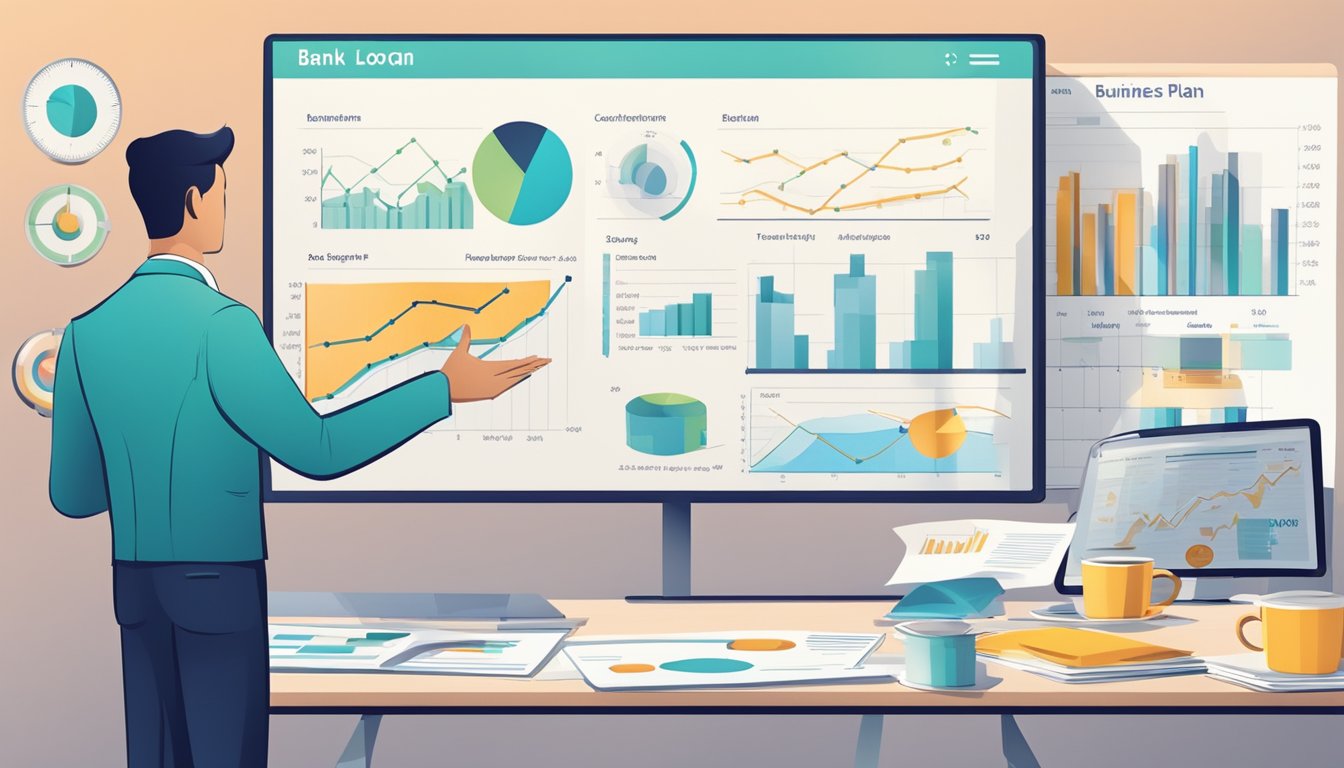If you’re planning on starting a business, you’ll likely need to secure funding at some point. One way to do this is by applying for a loan. However, before you can do that, you’ll need to create a business plan that outlines your goals and financial projections. In this article, we’ll take a closer look at what goes into creating a business plan for a loan application, and how to increase your chances of success.

Creating Your Business Plan When preparing your business plan, it’s important to keep in mind that lenders want to see a comprehensive overview of your business. This should include your company’s mission statement, product or service description, target market, and an analysis of your competition. You should also include a detailed financial plan that outlines your projected income, expenses, and cash flow.
Financial Planning and Projections Your financial plan should include a detailed breakdown of your startup costs, as well as your projected revenue and expenses for the first few years of operation. This will help lenders determine whether your business is likely to be profitable, and whether you’ll be able to repay the loan. Be sure to include realistic projections, and take into account any potential challenges or obstacles that may arise.
Key Takeaways
- Before applying for a loan, you’ll need to create a comprehensive business plan that outlines your goals and financial projections.
- Your business plan should include a detailed overview of your company, target market, and an analysis of your competition.
- Your financial plan should include a breakdown of your startup costs, as well as realistic projections for revenue and expenses.
Creating Your Business Plan

When applying for a loan, your business plan will be a crucial factor in determining your eligibility. A well-written business plan is essential to convince lenders that your business is a smart investment. Here are the subsections you should include in your business plan:
Executive Summary
Your executive summary should be a brief overview of your business plan. It should include your company overview, vision, unique value proposition, and business model. This section should also include your market conditions, target market, industry trends, and competitor analysis.
Market Analysis
In this section, you need to provide a detailed analysis of your target audience, industry, and market demand. You should also include information about your products or services, location, and pricing strategy. It is important to identify your competitors and their strengths and weaknesses.
Company Description
Your company description should provide an overview of your business, including your legal structure, board of directors, and management team. You should also include your organisational chart and the roles and responsibilities of each team member.
Organisation and Management
In this section, you should provide details about your management team and their qualifications. It is important to highlight the skills and experience of each team member and how they will contribute to the success of your business.
Marketing and Sales Plan
Your marketing and sales plan should include your marketing strategy, sales strategy, and sales forecasts. You should also include information about your social media and public relations strategy.
Operational Plan
Your operational plan should provide details about your operational processes, inventory needs, capacity, and training. It is important to identify any potential risks and how you plan to mitigate them.
By including these subsections in your business plan, you can create a comprehensive document that will help you secure a loan for your business. With a well-written business plan, you can convince lenders that your business is a smart investment, and you can secure the funding you need to grow your business.
Financial Planning and Projections

When it comes to applying for a loan, one of the most important aspects of your business plan is your financial planning and projections. This section demonstrates to lenders that you have a solid understanding of your business’s financials and that you have a plan in place to repay the loan.
Financial Statements
To start, you’ll need to include your financial statements. This includes your income statement, balance sheet, and cash flow statement. These documents provide a snapshot of your business’s financial health and help lenders understand your current financial situation.
Financial Projections
In addition to your financial statements, you’ll also need to include financial projections. These projections should be based on realistic assumptions and should demonstrate the growth potential of your business. You should include projected revenue, expenses, profits, and cash flow for the next three to five years.
Funding Request
Your financial projections should also include a funding request. This should detail the loan amount you are requesting and how you plan to use the funds. Be sure to include a breakdown of how the loan funds will be used, such as for capital expenditure budgets, financing growth, or expanding your business.
When creating your financial projections and funding request, it’s important to be realistic. Lenders want to see that you have a solid plan in place to repay the loan and that you have considered all of the conditions and requirements that come with the loan.
Overall, your financial planning and projections are a crucial part of your business plan for a loan application. By demonstrating a solid understanding of your business’s financials and providing realistic financial projections, you can increase your chances of securing funding for your business.
Frequently Asked Questions

How can you craft a compelling business plan to secure a bank loan?
Crafting a compelling business plan is essential for securing a bank loan. To create a convincing plan, you must provide a clear and concise overview of your business, including your goals, target market, and financial projections. Your plan must also demonstrate your ability to repay the loan and highlight your unique selling point. It’s important to keep your language simple and avoid jargon that the lender may not understand.
What essential elements must be included in a business plan for a successful loan application?
A successful business plan must include a detailed description of your business, market research, marketing strategy, financial projections, and management structure. It must also provide information on your industry, competition, and potential risks. Additionally, you must include a repayment plan that outlines your ability to repay the loan and any collateral that you can offer to secure the loan.
Could you guide me through the process of writing a business plan specifically for a loan application?
To write a business plan for a loan application, you must first research the lender’s requirements and tailor your plan to meet those requirements. Start by creating an executive summary that provides an overview of your business. Then, provide a detailed description of your business, including your goals, target market, and financial projections. Next, outline your marketing strategy and management structure. Finally, provide a repayment plan that demonstrates your ability to repay the loan.
What are the common mistakes to avoid when preparing a business plan for a lending institution?
When preparing a business plan for a lending institution, it’s important to avoid common mistakes. These include using overly technical language, failing to provide a clear and concise overview of your business, underestimating your competition, and failing to demonstrate your ability to repay the loan. It’s also important to avoid making unrealistic projections and failing to provide a clear repayment plan.
Is there a preferred structure I should follow when creating a business plan for financial lenders?
There is no one-size-fits-all structure for creating a business plan for financial lenders. However, most lenders will expect to see an executive summary, a detailed description of your business, market research, marketing strategy, financial projections, and management structure. You should also include a repayment plan that outlines your ability to repay the loan and any collateral that you can offer to secure the loan.
Where can you find a reliable template to help you draft your business plan for a loan application?
There are many reliable templates available online that can help you draft your business plan for a loan application. You can search for templates on sites such as the British Business Bank, GOV.UK, and SCORE. However, it’s important to tailor the template to meet the lender’s requirements and ensure that your plan includes all the necessary information.




